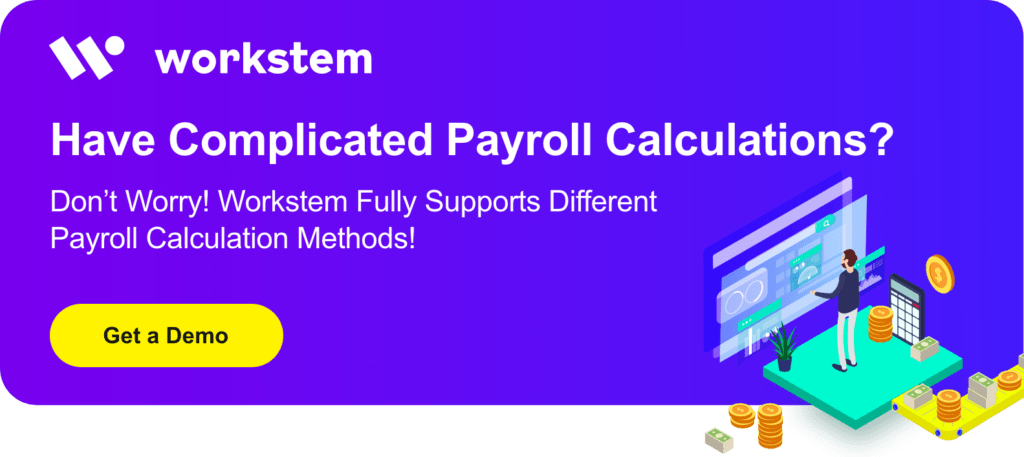What is 418?
According to the “Employment Ordinance”, an employee who has been employed continuously by the same employer for four weeks or more, with at least 18 hours worked in each week is regarded as being employed under a continuous contract, also known as Ordinance 418.
However, the Labour Department is reviewing the Ordinance in 2023 and plans to change it to 4 weeks of total working hours as the basis. Employees are required to meet different working hour requirements within four weeks, namely 72, 68, 64 and 60 hours.
What entitlements are covered by 418?
If the employee is eligible under the continuous contract (418), in addition to the basic rights and benefits, the employer is required to provide the following benefits:
- Rest day
- Holiday pay: Employed under a continuous contract for not less than three months immediately preceding a statutory holiday is entitled to the holiday pay.
- Paid annual leave: Employed under a continuous contract for every 12 months, can be entitled to 7-14 days of annual leave based on the service length.
- Sickness allowance
- Maternity leave
- Paternity leave
- Severance payment and long service payment
- Employment protection against dismissal or change of employment contract
Calculation of 418 entitlements
According to the Labour Department’s latest review of the Employment Ordinance, employees are required to meet different working hours requirements within four weeks, which are 72, 68, 64 and 60 hours respectively, to be entitled to paid annual leave and statutory holidays.
Paid annual leave
An employee is entitled to annual leave with pay after having been employed under a continuous contract for every 12 months. An employee’s entitlement to paid annual leave increases progressively from seven days to a maximum of 14 days according to his length of service:
| Years of Service | Annual Leave Entitlements |
| 1-2 | 7 |
| 3 | 8 |
| 4 | 9 |
| 5 | 10 |
| 6 | 11 |
| 7 | 12 |
| 8 | 13 |
| 9 or above | 14 |
*Any rest day or statutory holiday falling within a period of annual leave will be counted as annual leave and another rest day or holiday must be appointed.
Read More: Annual Leave
Statutory holidays
An employee, irrespective of his length of service, is entitled to the following statutory holidays:
- the first day of January
- Lunar New Year’s Day
- the second day of Lunar New Year
- the third day of Lunar New Year
- Ching Ming Festival
- Labour Day, being the first day of May
- the Birthday of the Buddha (newly added from 2022)*
- Tuen Ng Festival
- Hong Kong Special Administrative Region Establishment Day, being the first day of July
- the day following the Chinese Mid-Autumn Festival
- Chung Yeung Festival
- National Day, being the first day of October
- Chinese Winter Solstice Festival or Christmas Day (at the option of the employer)
| Calculation | Payment |
| The daily rate of holiday pay is a sum equivalent to the average daily wages earned by an employee in the 12-month period preceding the following specified dates.
If an employee is employed for less than 12 months, the calculation shall be based on the shorter period. |
Holiday pay should be paid to the employee not later than the day on which he is next paid his wages after that statutory holiday. |
*NOTE: In calculating the average daily wages, an employer has to exclude (i) the periods for which an employee is not paid his wages or full wages, including rest day, statutory holiday, annual leave, sickness day, maternity leave, paternity leave, sick leave due to work injuries or leave taken with the agreement of the employer, and any normal working day on which the employee is not provided by the employer with work; together with (ii) the sum paid to the employee for such periods.
Read More:
Statutory Holiday
How Do Employers Calculate Holiday Pay for Employees?
418 Case sharing
According to the Labour Department’s latest review of the Employment Ordinance, employees meet different working hours requirements within four weeks, namely 72, 68, 64 and 60 hours, in order to enjoy annual leave, statutory holidays and other rights. The calculation methods for different situations are as follows:
Case 1: The employee has worked continuously for 4 weeks with a total working hours of 68 hours
For example, an employee worked the following hours in one month:
| First week | Second week | Third week | Fourth week |
| 15 hours | 16 hours | 18 hours | 19 hours |
The employee qualifies because he worked 68 hours in four weeks. Therefore, he has the following rights:
- Annual leave
The employee is entitled to 12 days of annual leave, and the annual leave pay is the average daily wage in the past 12 months. If the employee has unpaid special work allowances in the past 12 months, these special work allowances must also be included.
For example, if the ADW in the past 12 months is HK$50 per hour, then his annual leave pay is HK$50 x 8 hours x 12 days = HK$4,800.
- Statutory holiday
The employee is entitled to statutory holidays such as the first, second and third day of the Lunar New Year, Dragon Boat Festival, Mid-Autumn Festival and National Day.
|
Calculation of statutory holiday pay |
daily wage on the day of the statutory holiday = the total salary of the past 31 days / 31 days / hours worked per day |
For example, if the employee’s total salary in the past 31 days is HK$10,000 and he works 8 hours a day, then his daily wage on statutory holidays is HK$10,000 / 31 days / 8 hours = HK$40.
Therefore, if the employee works 8 hours on the statutory holiday, his statutory holiday pay is HK$40 x 8 hours = HK$320.
Case 2: The total working hours of the employee is less than 60 hours, and has worked continuously for 4 weeks
For example, an employee worked the following hours in one month:
| First week | Second week | Third week | Fourth week |
| 15 hours | 16 hours | 15 hours | 13 hours |
Then the employee is not eligible under the Employment Ordinance because he worked 59 hours in 4 weeks, which is less than 60 hours. Therefore, he does not enjoy rights such as annual leave and statutory holidays.
Case 3: The total working hours of the employee are 64 hours, but the continuous working hours are less than 4 weeks
For example, an employee worked the following hours in one month:
| First week | Second week | Third week |
| 20 hours | 25 hours | 19 hours |
Then the employee is not eligible under the Employment Ordinance, even though he has worked a total of 64 hours but has not worked continuously for 4 weeks. Therefore, he does not enjoy rights such as annual leave and statutory holidays.
FAQs
Q: Are “temporary”, “part-time” and “substituted” employees covered by the Employment Ordinance?
A: The Employment Ordinance does not differentiate between “temporary”, “part-time”, “substituted”, “permanent” and “full-time” employees. All employees covered by the Employment Ordinance, irrespective of their designated job titles or working hours, are entitled to statutory rights and protection such as wage payment, restriction on deductions from wages and granting of statutory holidays, etc.
According to the latest review by the Labour Department: If employees meet different working hours requirements within four weeks, namely 72, 68, 64 and 60 hours, they are entitled to rest days, paid annual leave and sickness allowance.
Q: Would an “employee” and a “contractor or self-employed person” enjoy the same protection under the Ordinance 418?
A: The Employment Ordinance applies to employers and their employees engaged under a contract of employment. Only employees engaged under a contract of employment would be entitled to the rights and benefits provided under the Ordinance 418.
Hence, to avoid misunderstanding or dispute and to safeguard their rights and benefits, the relevant persons should understand clearly their mode of cooperation according to their intention and clarify their identities, whether they are engaged as an employee or a contractor/self-employed person, before entering into a contract.
Workstem manages 418 employees efficiently!
As an employer, familiarity with Ordinance 418 is critical to effectively managing and planning employees’ working hours and benefits, and is also helpful for communication and negotiation between employers and employees, ensuring that the rights and interests of both parties are protected.
In order to manage employee rostering, attendance, leave, payroll, MPF, tax and more, we strongly recommend using Workstem one-stop cloud-based payroll & HR platform to improve business operation efficiency.
Workstem supports multiple integrations, such as HSBC autopay and Xero accounting system, making work easier and more convenient. Join now and enjoy a 14-day free trial!
Read More:
【Labour Legislation】418, 713 and ADW Calculation
Many Part-time Employees? How to Take Care of the “418” Rule?
Ordinance 418|Do Part-time Employees Have Paid Leave

(The content and information in this article are for reference only. The accuracy and reliability of the information are subject to the latest government regulations. If you want to reprint the article or content, please contact us first or attach a link to this article, and indicate the source of reprint.)




![[418 Guide] Ordinance 418 And Continuous Contract](https://www.workstem.com/wp-content/uploads/2023/08/Untitled-design-min.png)


